Pros and cons of zoning
Before zoning a one-room apartment, you should evaluate the feasibility of redevelopment: will the advantages of the work performed really outweigh their disadvantages?
pros
There are 3 main advantages:
- Functional separation... In order not to pile everything you need on top of each other in one room, separate the necessary space and make two or even three rooms out of one. For example, in a one-room apartment, you can allocate a sleeping place, a work or play area.
- Natural light penetration... Unlike capital partitions, zoning ones rather perform a decorative part and do not have to be deaf: make gratings, a wall from racks, glass sliding structures. This will maximize the preservation of light from the windows in all zones, while visually separating the spaces from each other.
- Saving money... The design of a one-room apartment with zoning can be done independently from start to finish: you do not need a lot of finance to draw a plan and outline boundaries, rearrange, install screens.
Minuses
Zoning of a one-room apartment has not only positive, but also negative aspects:
- A pile of furniture and unnecessary things... If you are not distinguished by a commitment to minimalism, there is a risk during the creation of a project to make a complex labyrinth instead of dividing, killing the whole idea of zoning an apartment on the vine.
- Complexity of registration... When a room initially has an irregular shape, dividing it into two zones means overshadowing the renovation process for yourself in the future. Working with obtuse or sharp corners, light and other details will not be easy. If in doubt that you can handle a complex layout perfectly, consult a professional designer. Or try to highlight areas with a decorative technique: light, color, texture.
- Visual area reduction... One large open room looks more spacious than two cozy small ones with a partition - this is logical. But when reducing the territory, it should be borne in mind that now other design rules are in effect: for example, avoid unnecessary decor so as not to clutter up the room.
How can you zone a one-room apartment?
Zoning a one-room apartment involves completely different ideas: from almost imperceptible to completely physical.
Color highlighting of zones
The simplest, fastest, most economical trick: but at the same time the most invisible. It is assumed that the main decoration is done in one color, and individual spaces (sleeping area, children's area) are simply emphasized by a different shade - bright or contrasting, relative to the first. No partitions or shelving.
In the photo, the option of zoning a one-room apartment in bright colors
Texture
The technique is similar to the first, but instead of color, a difference in texture is used: paint, wallpaper, wood, brick, stone, tile, soft panels, etc. A textured surface is more visible than just a colored surface, and emphasis will be more obvious.
Lighting
This zoning idea also applies to visuals. The essence of the design is the use of different lamps in separate areas. For example, in the living room there is a chandelier on the ceiling, in the bedroom there are several spots, on the wall above the desk there are small sconces, etc.
Important! Be sure to keep in mind that all points must turn on and off independently of each other.
Curtains
Don't want to use partitions in a one-room apartment for zoning, but at the same time need to physically separate the territory? Hang the curtains! The main advantage of zoning curtains in a one-room is that, if necessary, they slide in and out - which means they will not make serious changes to the appearance of the apartment.
At the same time, textiles are used as decor: it can be absolutely anything, from neutral to accent.
Pictured is a bedroom hidden by curtains
Plasterboard partitions and arches
We turn to the static elements that need to be erected at the stage of repair. Drywall is an amazing material. With the necessary skills, you can build from it not only a straight blank wall, but also a structure of any shape with shelves for storage, decorative niches and other attributes.
Of the minuses - complex interesting designs have long gone out of fashion and you risk getting 90s interior instead of a fresh design renovation.
Podium
The podium will help to zone a one-room apartment without vertical partitions! Erect it in the right place and place it on top bed (for the bedroom) or sofa (for the living room). When you need to climb or descend into a zone, the feeling of separate rooms is created.
Advice! The podium gives a lot of opportunities for design: for example, if you make a moving bed inside it, then there will be space on top for an office or a nursery. And the bed will be present in the room only at night, without taking up space during the day.
Niche
When the initial layout assumes the presence of a cubbyhole, it is a sin not to use it for your own purposes: usually a bedroom is located in a niche, but if necessary, it is suitable for a nursery or a dining room.
You can physically separate the room in the niche from the main one with curtains, glass screens from floor to ceiling, and any other tricks.
In the photo, the location of the bed in a niche
Sliding partitions
A modern and stylish option that designers love very much. Usually they are made of transparent glass or plastic - this allows you to preserve natural light and not clutter up the space, while emphasizing the style.
Partitions operate on the principle of compartment doors: they are installed on guides and drive along them in any direction. Sometimes all the details are made sliding, this allows you to return the original look to the room in a matter of seconds. But more often, some elements remain static, and only doors move.
In the photo there is a partition with hinged doors
Furniture
Those who prefer functional design and do not like meaningless decorations will love the idea of dividing the apartment with furniture. Usually, mesh racks are used - they simultaneously separate areas, while maintaining the ability to penetrate sunlight.
The only caveat - you will want to put something on each of the 16 shelves (otherwise why do you need it?) And the room will already seem cluttered.
Other examples of furniture use:
- between the kitchen and the dining room or living room, a column or a high pencil case is erected, or a bar counter, an island, a peninsula is placed;
- a wardrobe, an open hanger for clothes, a sofa with a back to the bedroom are placed between the bedroom and the living room;
- between the living room and the nursery, a playhouse, a Swedish wall, and a storage cabinet are installed.
Advice! To keep the furniture from looking bulky, choose products in white or light colors.
Examples of zoning for a family with a child
Placing a family of two adults on the same square is much easier than coming up with a separate space in a small apartment for a child as well.
Children need a sleeping area, playroom, study area, storage space for toys, clothes, books, and other items.
In the photo there is a small nursery in a one-room
Organizing a separate nursery is the most correct option. Highlight it with furniture or partitions, or take away an existing niche.
Advice! For the nursery, they choose a secluded, bright and warm corner without drafts - think in advance where he will be comfortable.
Zoning ideas for the bedroom and living room
It is possible to place a complete set of furniture for a two-room apartment on square meters of a one-room apartment. To separate the sleeping and sleeping space from the living room, it is best to use floor sliding partitions. So at night you can close the "doors" of the bedroom and enjoy peace.
Advice! Glass screens can be supplemented with curtains from the inside so that the morning sun does not wake you up too early.
It is also possible to combine two zones without partitions, but this option is suitable only if 1 person or a family of two adults live in the apartment.
Important! Move the bed away from the window and set up a sleeping place in a dark corner. You will not need lighting at night, and during the day you will not notice difficulties, because you will not use the bedroom.
Workplace options
Examples of zoning a one-room apartment with an office suggest the allocation of a quiet and calm area for work. Main options 2:
- Put the table closer to the window and cut it off from the main room at the back or side with slats, a screen, a partition.
- Place the workplace in the quietest corner of the house: for example, farther from the kitchen or living area, if you have to work when other family members are at home. For better sound insulation, use blind dense partitions.
Photo gallery
You have learned all the basic solutions to the problem of dividing an apartment. Look in the gallery for a photo of the idea of zoning a one-room apartment and choose the most convenient option for yourself!

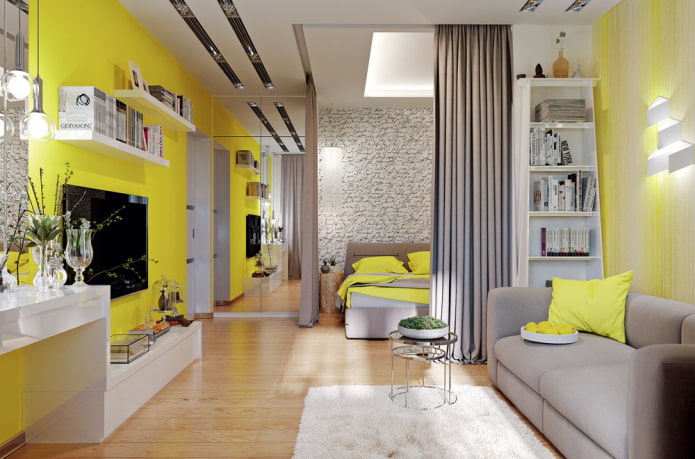
 10 practical tips for arranging a small kitchen in the country
10 practical tips for arranging a small kitchen in the country
 12 simple ideas for a small garden that will make it visually spacious
12 simple ideas for a small garden that will make it visually spacious

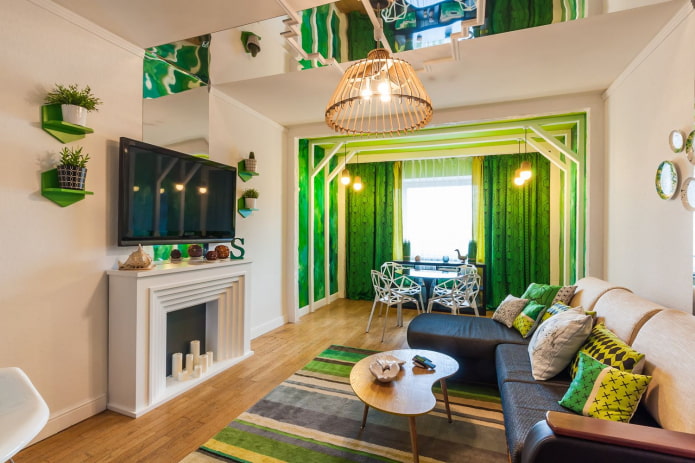

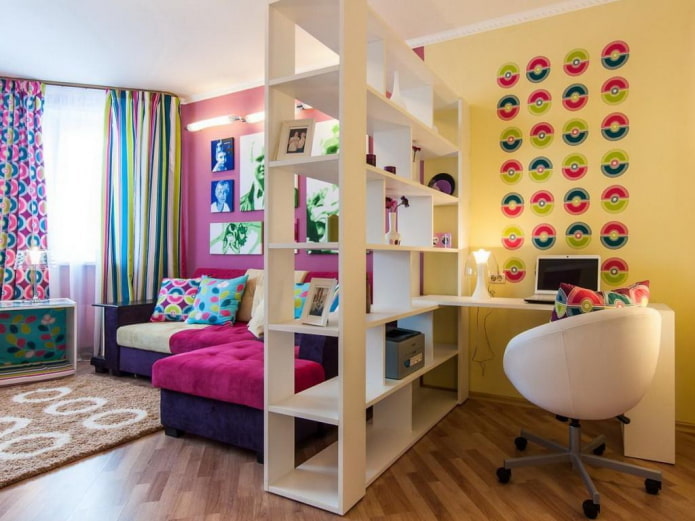

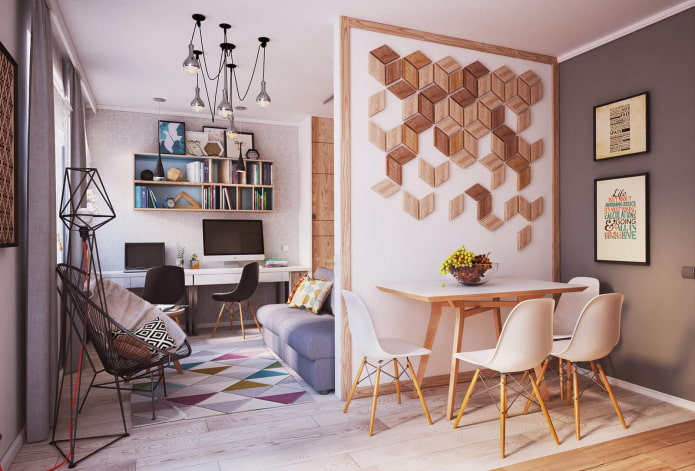
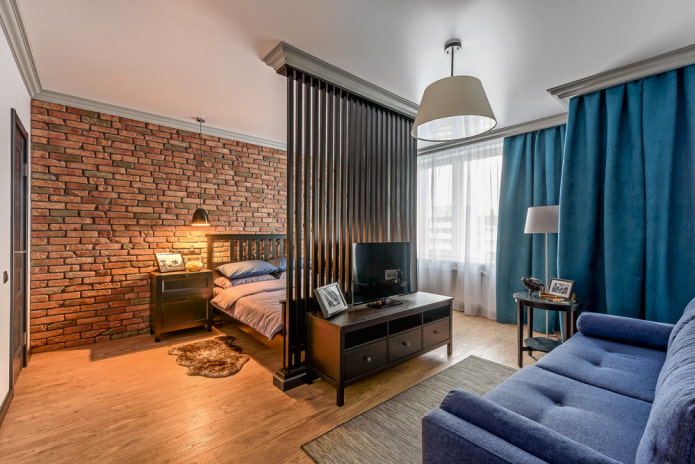
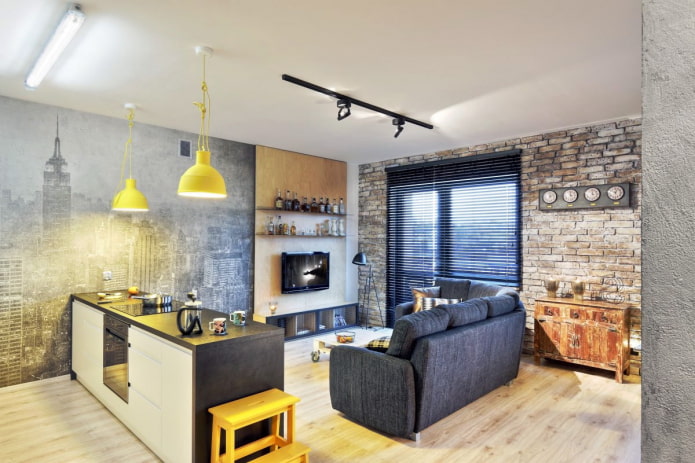
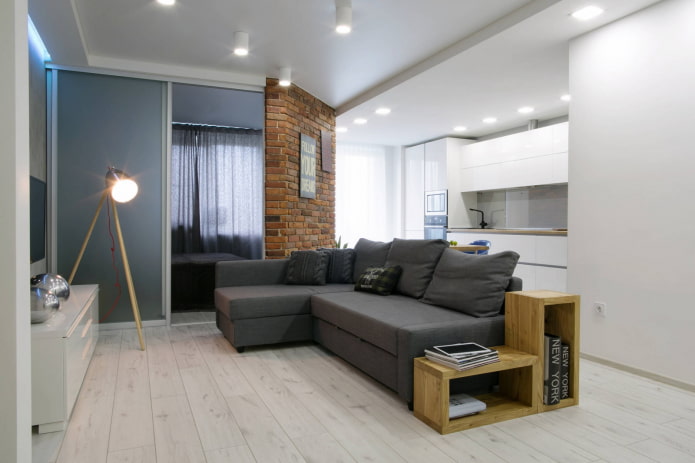
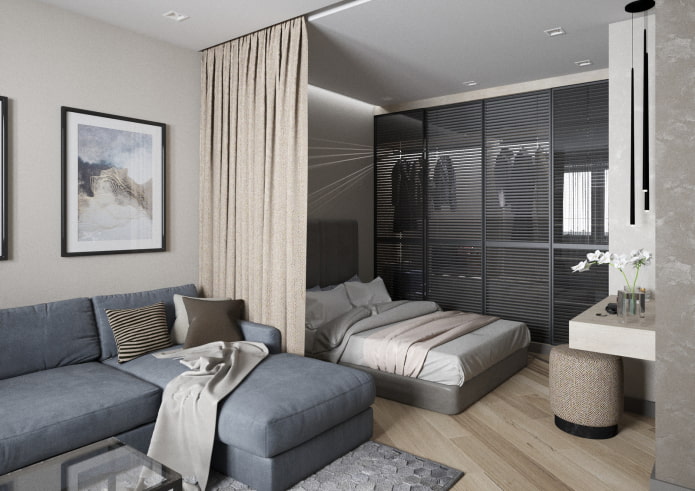
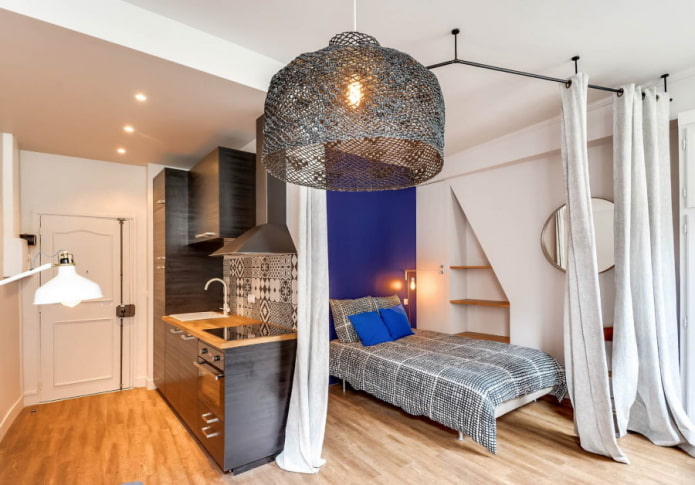
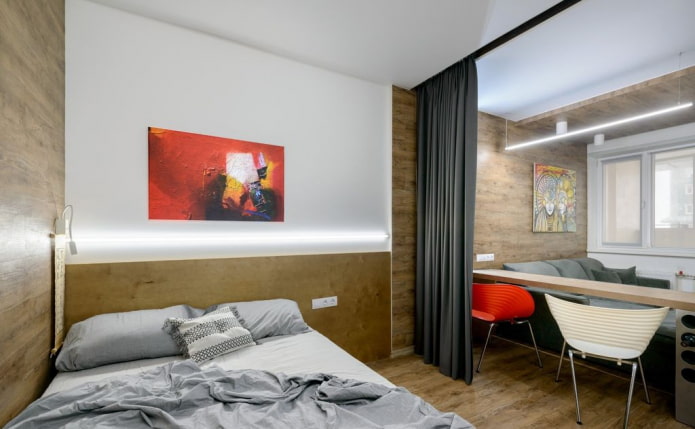
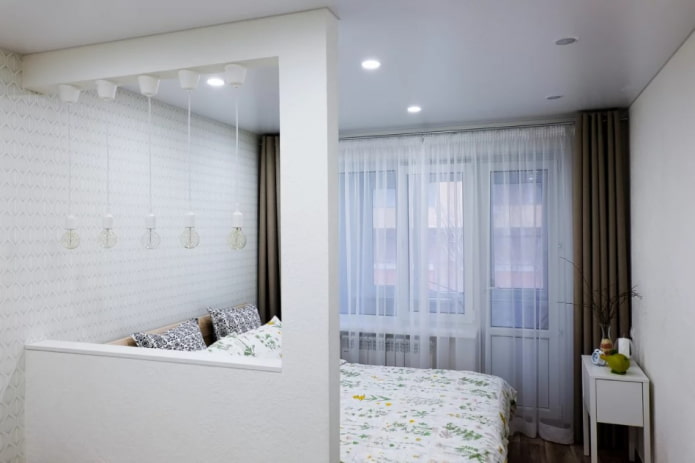

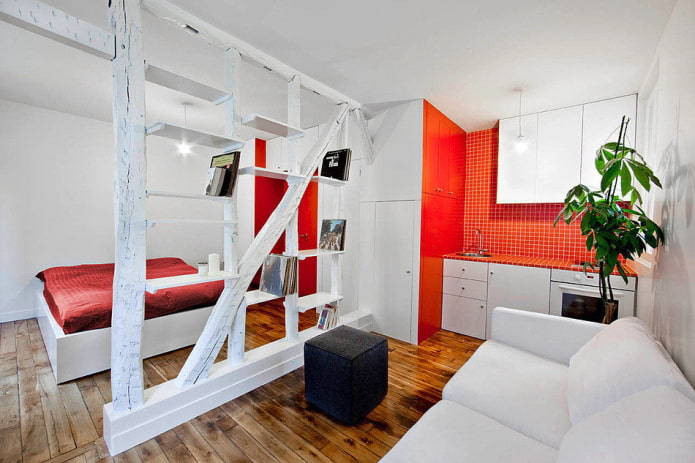
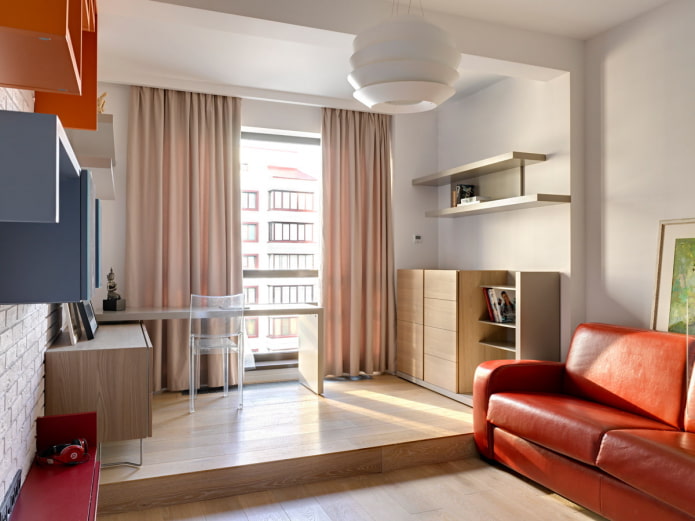
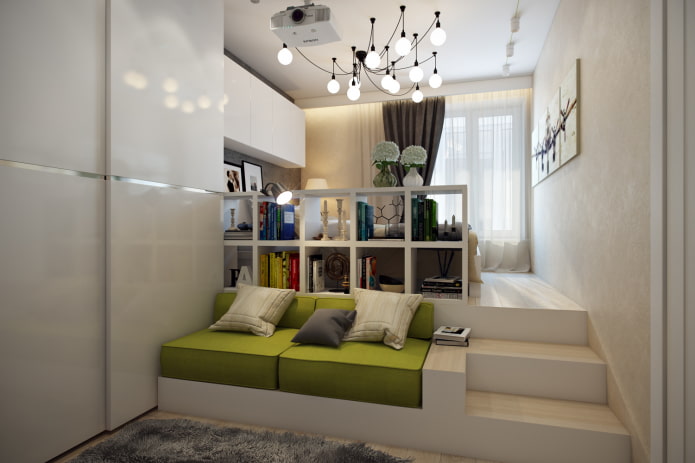
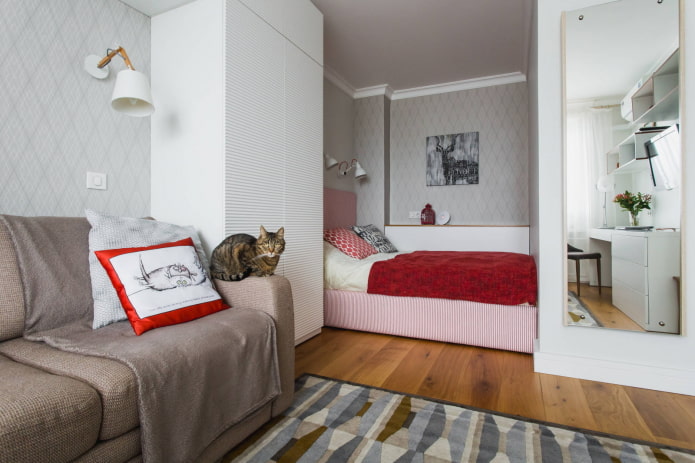


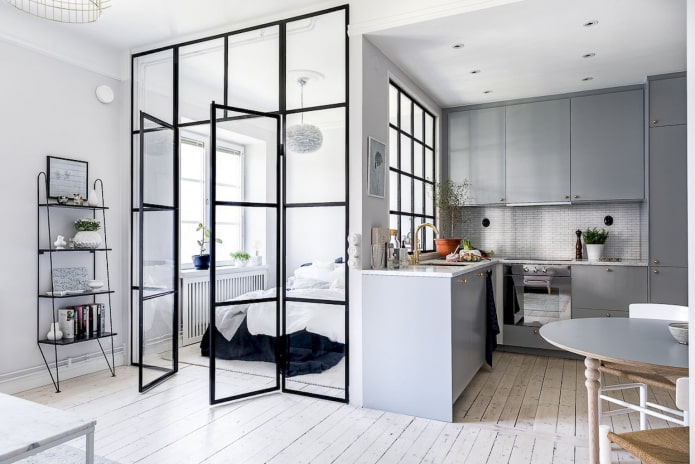
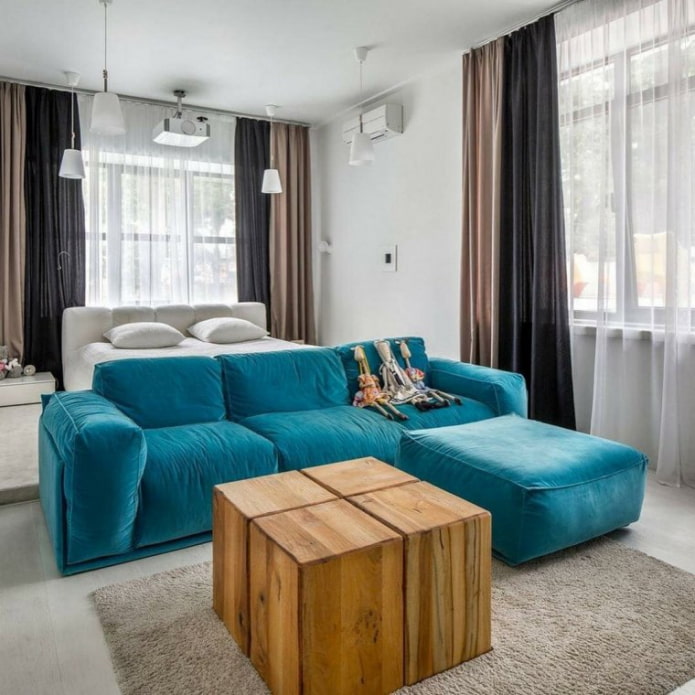
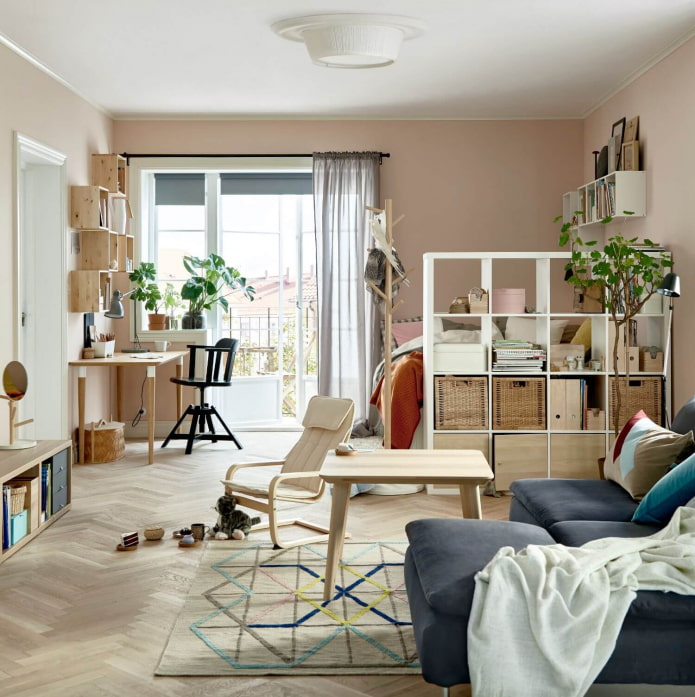
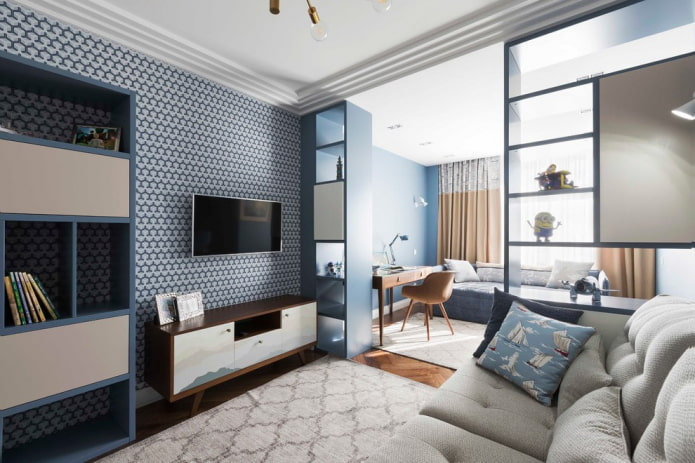
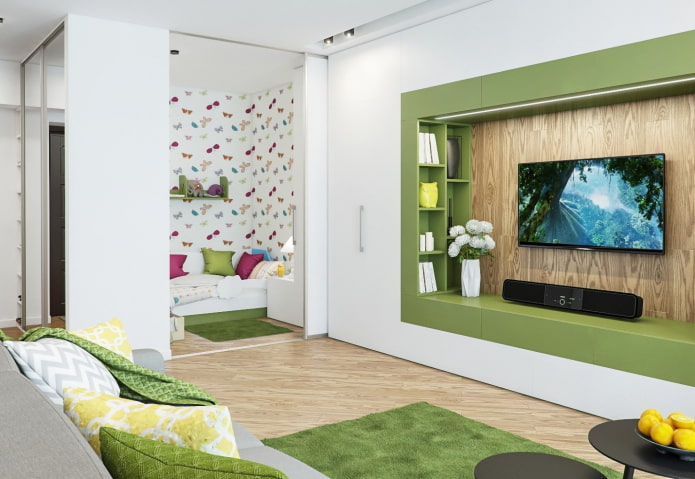
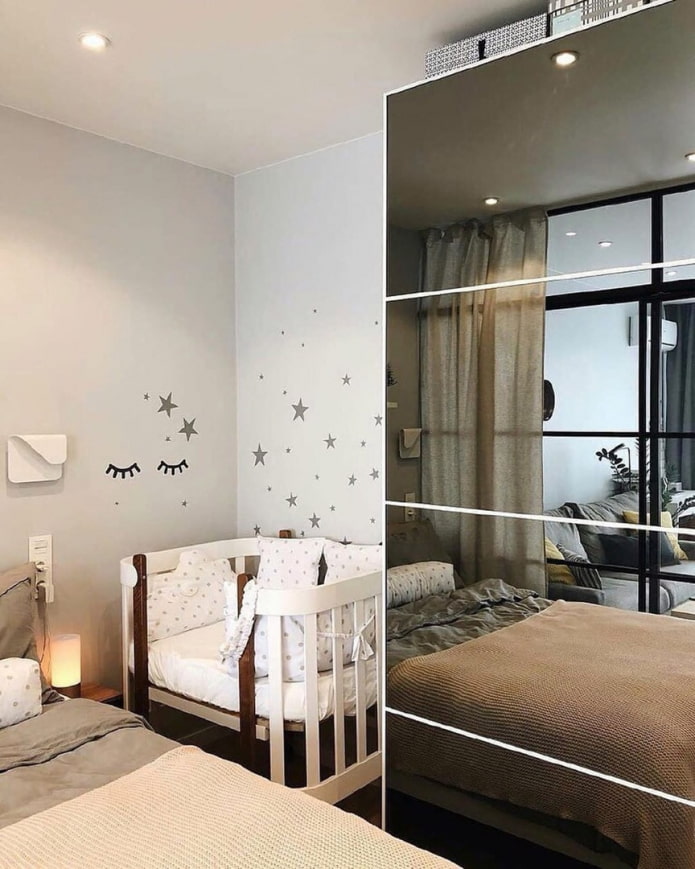
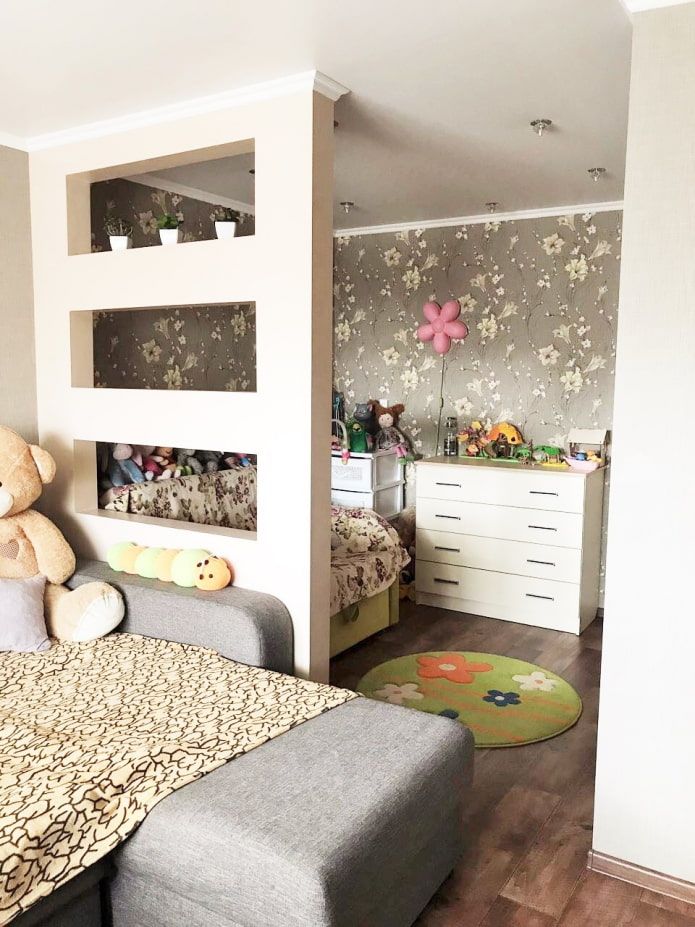
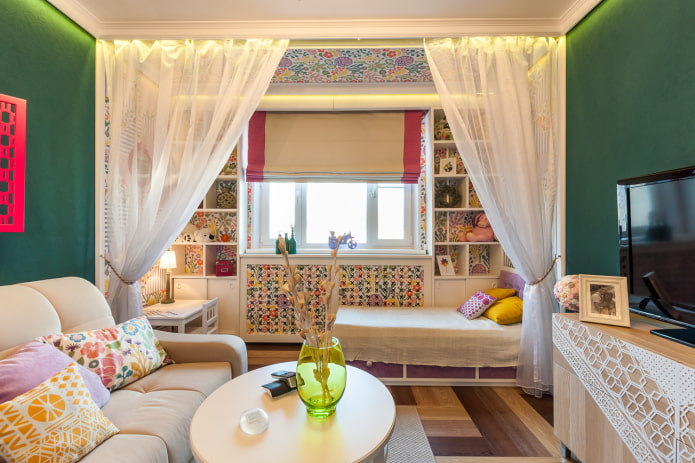

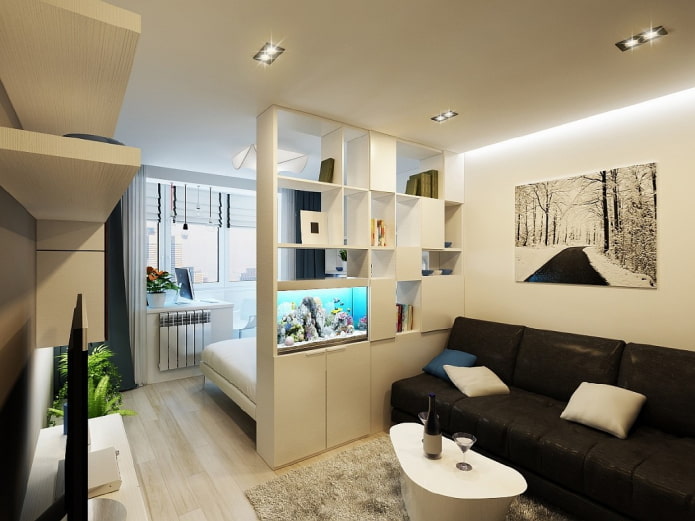
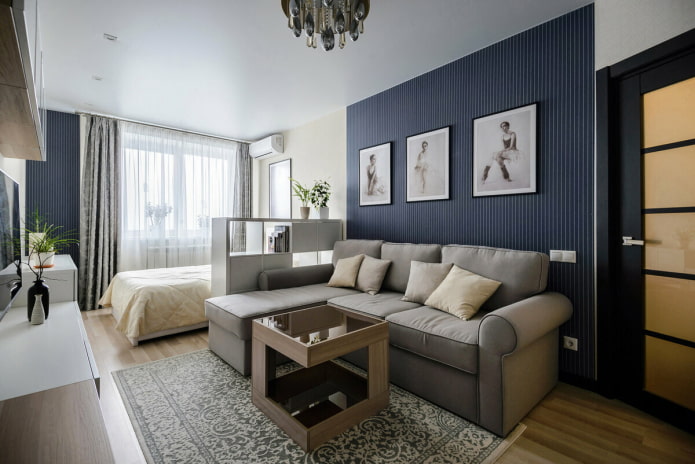
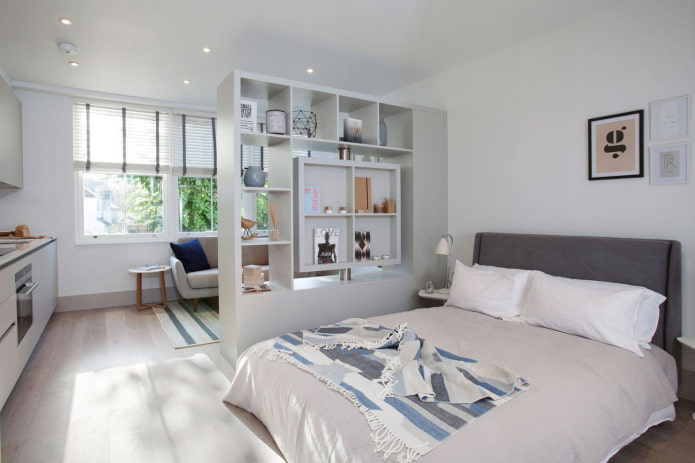
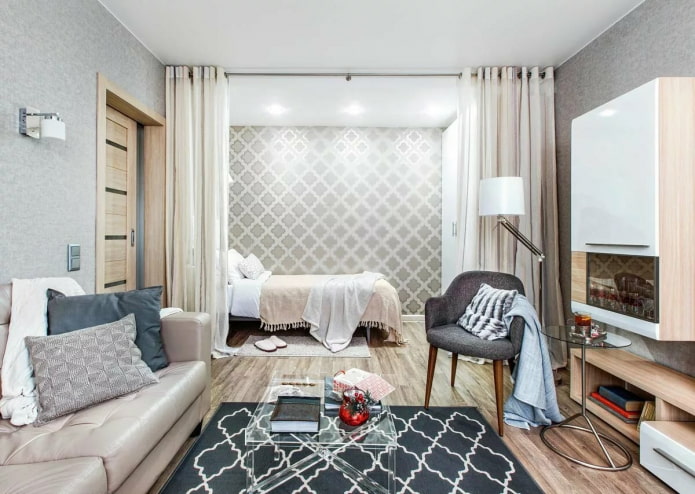
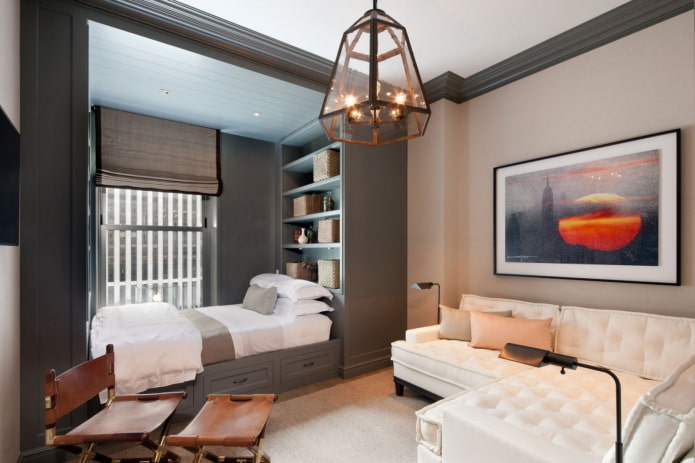
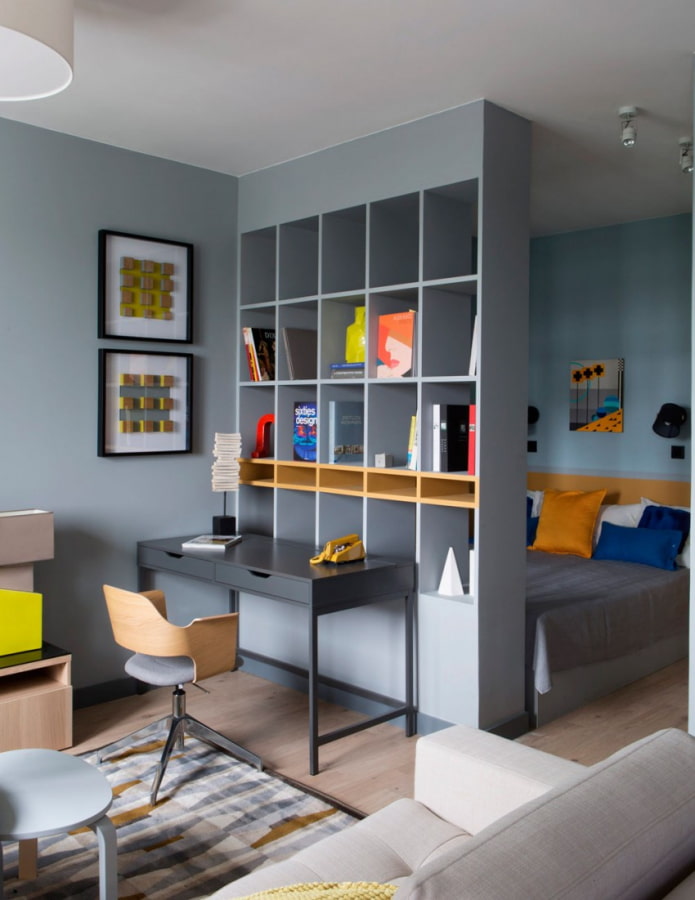
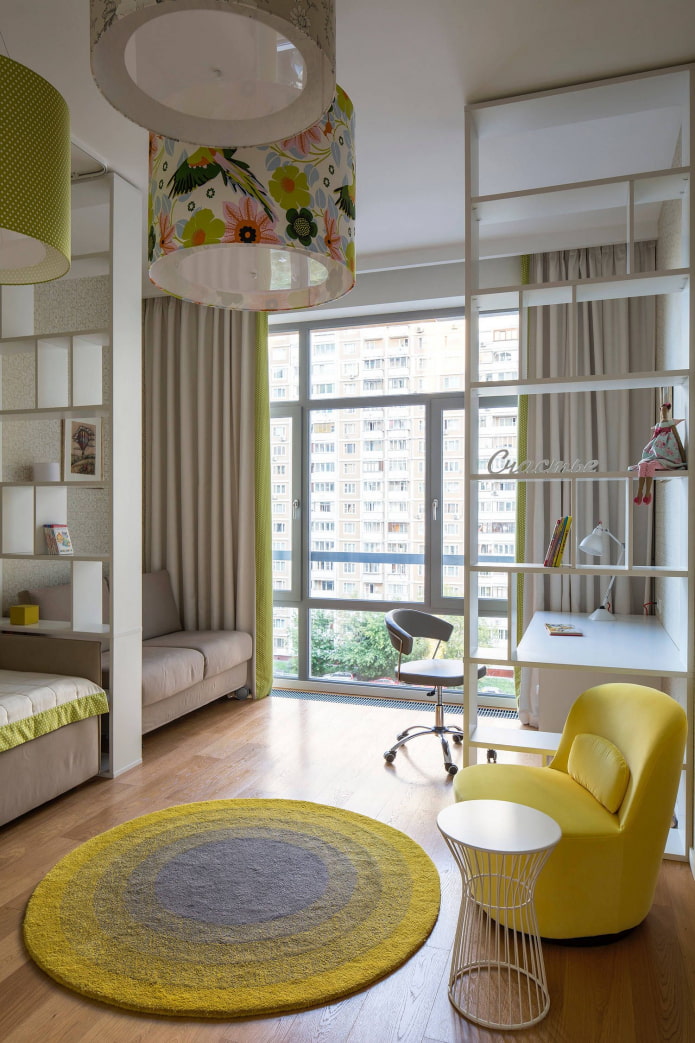
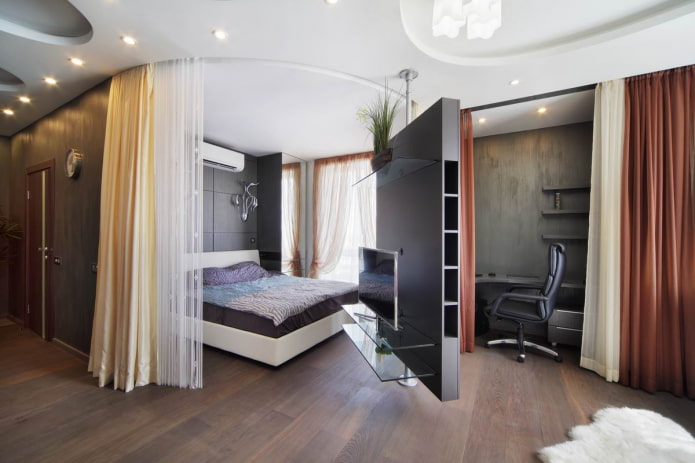
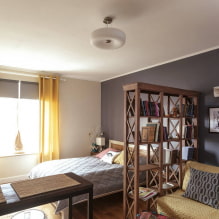

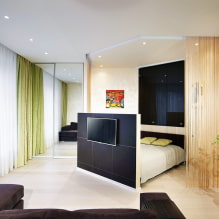
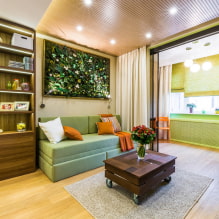

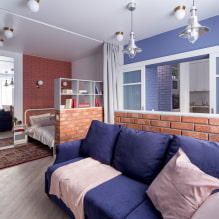
 Design project kopeck piece in brezhnevka
Design project kopeck piece in brezhnevka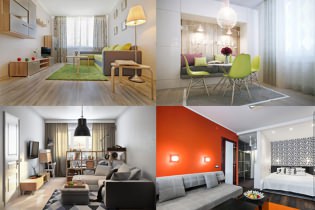 Modern design of a one-room apartment: 13 best projects
Modern design of a one-room apartment: 13 best projects How to equip the design of a small apartment: 14 best projects
How to equip the design of a small apartment: 14 best projects Interior design project of an apartment in a modern style
Interior design project of an apartment in a modern style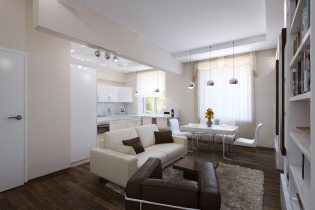 Design project of a 2-room apartment 60 sq. m.
Design project of a 2-room apartment 60 sq. m. Design project of a 3-room apartment in a modern style
Design project of a 3-room apartment in a modern style